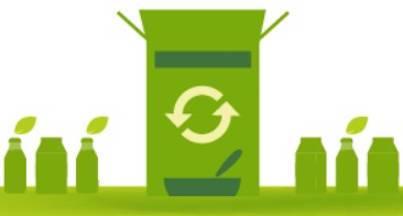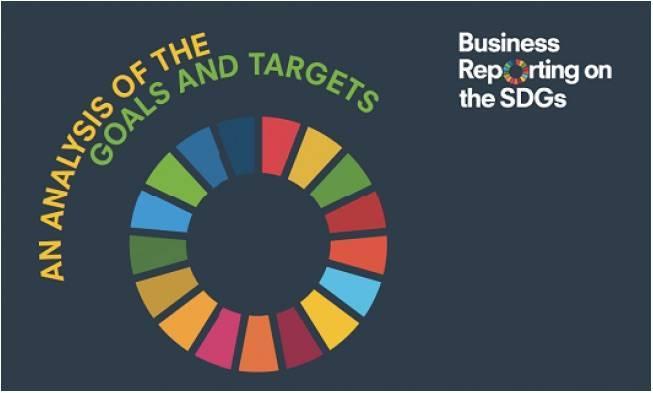Changing the Story of Women in the Workplace


By Kelly McGrail
Can ignoring gender bias make it go away? Of course not.
But I do wonder whether the specter of gender bias is creating self-limiting stories for a generation of women entering the workforce. This question was inspired by a recent visit to the campus of one of our nation’s most respected universities. While there, I had a chance to meet with about a dozen young graduate and undergraduate women. Their CVs were incredibly impressive. But when talking about their plans to join the workforce, rather than expressing excitement about future possibilities their questions were overwhelmingly weighted toward managing gender bias. Admittedly, this was a women-only discussion, and maybe it felt like a safer space to air their concerns versus similar discussions they had with businessmen. Regardless, it was clear the stories they had internalized led them to expect gender discrimination in the workplace.
These young women were assuming it would be hard to have their voices heard in meetings. They wondered if their ideas would be taken seriously. They worried about being denied opportunities afforded their male counterparts. They had the distinct impression bad things were going to happen at work because they were women…and it broke my heart.
Frankly, I was never exactly in their shoes. I went to a strong school, but not an Ivy League university, and while I made good grades, compared to the academic commitment and accomplishments of these young women, I would’ve looked like a slacker. But I think I had an advantage when entering the workforce. Why? Because I didn’t go into my first job (or any job) expecting to fight my way through a discriminatory environment. Was I ignorant of workforce challenges? Impossibly naive? No doubt. But, I was also unfettered by the worry that I would be at a disadvantage as a woman and it, therefore, had no power over me.
It is good that we’re more transparent about gender bias in the workplace; it’s a critical step toward eradicating it. But an unintended consequence of this new level of openness and discussion may be that some young women are entering the workforce with fear and trepidation – instead of with gusto and optimism.
Ignoring gender bias in the workplace isn’t the answer. When we find it, we must confront it. But how do we take away its power to intimidate before it even manifests? Young women should enter their careers with the full expectation of gender parity and equality. We want them to be confident they’ll be heard, counted and valued. We want them to see differences in the workplace — any difference, gender or otherwise — as an asset, not a burden to bear.
The Advantage of Differences
What I appreciate about the environment at Mars is a spirit of recognizing — and valuing — differences between people. All Mars Associates (we don’t use the term employees) are encouraged to share ideas, voice opinions and embrace diversity. We focus on self-awareness of strengths, empathy and the ability to collaborate with diverse people…man, woman, blue, purple…it doesn’t matter. Bringing people with different skills and perspective together, encouraging open conversations around the value these difference bring and, ultimately, by celebrating how it enriches our work is a good defense against any kind of bias.
For example, my colleague and I were charged with rolling out our company’s five-year strategic plan on behalf of the executive team. Her background is in strategy development and deployment. My background is in communications and engagement. We collaborated, learned from each other and supported one another – particularly when we hit bumps in the road. The differences in our styles and backgrounds helped us when aligning stakeholders that were equally diverse, including the c-suite team. Together, we cascaded and deployed a plan that excited and motivated our organization, and which we’re tracking and delivering with discipline. We brought our unique skill sets to bear to accomplish more than either of us could have done on our own.
I have another colleague whose brain is wired completely differently from mine (not just because he’s male). When I have a sticky problem, I often bounce it off of him because I know he’ll look at the problem from a different angle. Even when we disagree, his input helps me avoid being blindsided because I didn’t consider this alternative point of view. I can do the same thing for him.
These are the kinds of workplace anecdotes I wish the young women at that Ivy League school were hearing.
Telling a New Set of Stories
To help dispel the specter of gender bias, there’s an opportunity for all of us to tell the positive stories — loudly and often. The stories where women of character and strong work ethic are doing rewarding and important work. And — this is key — the stories of how these women had female and male collaborators and supporters on their journey.
We can’t rely on the tales of exceptionalism that make headlines– the Supreme Court Justice, the media mogul, the CEO. While these outstanding women are role models, and their careers an inspiration, it’s equally important to celebrate the everyday successes of women across the workforce who aren’t in the limelight. All of these victories work to chip away at the old biases, revealing a gender-neutral opportunity to succeed.
Each of us has the chance to share stories of development, learning, setbacks, failures and resilience. We can tell these stories on college campuses, in high schools, in the workplace, and at home with our daughters, granddaughters and nieces … and our sons, grandsons and nephews. We have the chance to rewrite the narrative that shapes how young women andyoung men think about the workplace.
We aren’t ignoring gender bias, or the part it has played in women feeling undervalued in the workplace. Instead, we’re cutting the legs from beneath this inequality by resetting expectations of the next generation — so that young women can run headlong into their future, confident that the workplace welcomes them and the difference they will make.
Kelly McGrail is Vice President, Strategic Business Communications, Mars Inc.
Photo: Mars
Originally published on LinkedIn and distributed by 3BL Media
Feeding 9 Billion People in 2050? Challenging!


By Governance & Accountability Institute
The CEO of one of the nation’s leading food and agriculture companies, Land O’Lakes, Chris Policinski, has an important message for us: “To move the planet forward, farmers must lead the charge. But they cannot do it alone. Coordinated action on sustainability across the food supply chains is the only way to achieve lasting progress.” He tells us how and why in his commentary in a Top Story.
Some background: The Population Division of the Department of Economic and Social Affairs of the United Nations Secretariat in the 2017 revision of the World Population Prospects (the 25th version of this report) says the current world population of 7.6 billion is expected to reach 8.6 billion in 2030, 9.8 billion in 2050 and 11.2 billion in 2100. More than 80 million people are added to the world’s population each year. One of the 2030 Agenda for Sustainable Development Goals (SDGs) is to end poverty and hunger—how we achieve this will depend in large measure on the success of growers in the USA and many other lands.
Looking at global agriculture moving towards 2050, there are serious challenges posed. In 2009, the UN’s Food and Agriculture Organization (FAO) described some of these: much more food and fiber must be produced; there will be a smaller rural labor force to help do this; there will be increased demand for more feedstocks for a potentially huge bioenergy market; adapting to climate is necessary; and, ag producers must be more efficient and sustainable. Demand for cereals, for example, could almost double from today’s production (for animal feed and human food). Almost all of the land expansion for ag could be in sub-Saharan Africa and Latin America.
CEO Policinski, writing in Agri-Pulse, explains that while the discussion about climate change and other challenges seems to be focused on developments being a generation away, American farmers are dealing right now with such things as harsh drought, severe weather and more pests . . . the challenges to the food supply are happening right now.
And it is time to start talking about sustainability differently . . . to include (for example) the reality of what farmers face, acre-by-acre/field-by-field. And then, “farm-to-fork” issues. Bringing together big-picture, company-level sustainability commitments and acre-by-acre conservation efforts makes both more effective. The great example used by CEO Policinski is Wal-Mart’s Project Gigaton, which aims to remove one billion metric tons of GhGs from the company’s supply chain by 2030. (Land O’Lakes was one of the first supply partners to sign on.)
Note: Land O’Lakes, Inc. is a member-owned cooperative agribusiness and food production company based in Minnesota, with $13.7 billion revenues in 2017. The cooperative is almost 100 years in operation and ranks #215 on the Fortune 500® roster.
There’s much more for you in the Land O’Lakes CEO’s message in one of our Top Stories. This week we have ag and food in focus in G&A's Sustainability Highlights newsletter this week. Click here to view the full issue.
Photo: Flickr Creative Commons 2.0
Circular Economy Strategy for Packaging Adopted by Nestlé


Nestlé, the world’s largest food company, is to make all its packaging recyclable or reusable by 2025.
The Swiss multinational, whose products include chocolate, breakfast cereals, coffee, soft drinks and soup, intends that eventually none of its packaging will end up in landfill or as litter.
The company says it decided on these objectives largely because so much packaging now pollutes seas, oceans, waterways and other areas of the planet.
During the next seven years Nestlé aims to cut out non-recyclable plastics, encourage the use of more plastics that are recyclable, and ditch or change the complex mix of packaging materials.
In efforts to develop a circular economy Nestlé will help authorities and businesses to operate efficient collection, sorting and recycling schemes in countries where it manufactures and trades, and will combine with industry associations and supply chain partners to explore packaging methods that reduce plastic use, to facilitate recycling and to find new ways of phasing out plastic waste.
It will label its plastic packaging with recycling information telling consumers how to dispose of it responsibly and will promote a market for recycled plastics by continually increasing the amount used in its own packaging.
Nestlé chief executive Mark Schneider said: “Plastic waste is one of the biggest sustainability issues the world is facing today. Tackling it requires a collective approach.
“We are committed to finding improved solutions to reduce, reuse and recycle.”
In a related move, Aldi, the German-owned discount supermarket group with more than 10,000 stores in the UK, mainland Europe, Australia and China, is to use only recyclable, reusable or compostable packaging for its own-brand products by 2022.
As part of its green policy Aldi will scrap plastic carrier bags, charged at 5p each under government regulations, by the end of this year. Customers will be offered bags for life and 9p reusable bags instead.
UK research company Delineate has just issued poll results stating that 35 per cent of British consumers are seriously worried about progress in the battle against plastic waste.
Photo: Nestle´
Women: The Next Corporate Cause?


On January 7, 2018, at the 75th annual Golden Globe Awards, Oprah Winfrey received the 2017 Cecil B. DeMille award for outstanding contributions to the world of entertainment — the first black woman in history to win this coveted award. She delivered a timely and well-crafted acceptance speech — better yet, a call to action — declaring ever so eloquently that the culture of silence in the entertainment industry has ended, “… I’m especially inspired by all of the women who have felt strong enough and inspired enough to speak up and share their personal stories. Each of us in this room are celebrated because of the stories that we tell, and this year, we became the story.”
2017 will be remembered as the year of women, as the year when women across the country and in every industry said, “Me Too” in unison. In January of 2017, nearly 5 million Americans marched for women’s rights; since that time, the Women’s March has been called one of the largest demonstrations in American history. In February, Susan Fowler published her now viral essay on the culture of sexual harassment at Uber. In December, it was the “silence breakers” who were given the honor of Time’s Person of the Year. And by January 1, 2018, a legal defense fund had been created through a new organization powered by women, appropriately named, Time’s Up. The organization addresses the systemic inequality and injustice in the workplace that have kept underrepresented groups from reaching their full potential.
The women who marched, and the women who spoke up are various. They are actors, activists, hotel workers, senators, hospital workers, entertainers, dishwashers, artists, journalists, farm workers, entrepreneurs, housekeepers, professors, office assistants, those who chose to remain anonymous, and many more. These women are also your employees, your employers; your mothers, your sisters, and your daughters. American culture, and more importantly, the American economy, have stumbled upon the place where two roads are diverged in a wood; which road will you, business leaders, choose?
In November of 2017, Cecile Richards, outgoing President of Planned Parenthood of America and the Planned Parenthood Action Fund addressed a captive audience of business leaders at the 2017 Business for Social Responsibility (BSR) conference, themed “How Business Leads.” Planned Parenthood has been a beacon for women’s rights for over 100 years; Planned Parenthood is also a business that has been under attack throughout much of their existence. Richards, who has served as the president for 12 years, has been a bold and courageous leader; in the past year alone, she has helped to guide the women’s healthcare organization through three defunding attempts at the hands of a hostile administration. Through a combination of her tenacious spirit and the reality of President Trump’s low approval rating, in the first 100 days after the 2016 election, donations to Planned Parenthood were up 1,000 percent. Richards knows a thing or two about leadership, and drew from her work fighting to keep a business alive and thriving to challenge her colleagues. “It’s time we embrace women’s full equality. For the women who work for you, for the women who would like to work for you, and for the women who want to look up to you and your brand as a force for good in the world.”
Historically, business and government haven’t always been on the same page, but it’s often been the business community who has the cultural capital and influence to move the needle on key issues. In her call to action, Richards reminds the business community of just how effective they have been in the past:
Business has led and can continue to lead where the government is lagging behind. Companies like Microsoft and Levi Strauss have set examples on how to treat LGBTQ employees back in the day. Business has stopped backwards policies in their tracks by threatening to take their business out of states like Indiana and North Carolina after their governments backed discriminatory legislation.In directly addressing the wins that the business community has championed, Richards continued by putting forth a bold challenge to the leaders in the room. “You’ve stepped up for the environment, against gun violence; you’ve stood up for immigrants and refugees because they are your employees, board members, and CEO’s…. Here’s my challenge: It’s high time we do the same for women.” Richards adds, “You are the biggest, loudest voices in our country, and if you don’t like this vision of America that the administration is articulating, now is the time to offer an alternative.”
To take up the fight for women’s rights, it’s critical to understand the challenges women face in the workplace and the opportunities available for your company. If you are serious about women’s rights, get a meeting on the calendar today to consider these three things.
1. Company culture Often times women find themselves having to wedge their square pegs into the round holes of corporate America, and even when they do so, gender bias is still an ever present issue that can create a barrier to success. JL Berdahl reports in her 2007 book “The Sexual Harassment of Uppity Women” that research has shown that women in male-dominated occupations, especially those in male- dominated work contexts, are sexually harassed more than women in balanced or in female-dominated ones. According to a 2015 Cosmopolitan survey,1 in 3 women ages 18 to 34 have been sexually harassed at work. Seventy one percent of those women said they did not report it.
Richards paints this picture clearly for the audience, “For decades we as women in America have fit ourselves into a world and workplaces that weren’t built for us. Some women don’t even think about it. We make many little allowances each day without even thinking about it; from laughing off crude jokes to losing sleep thinking, “What if this meeting runs to long and I can’t pick up the kids?”
Richards recommends that you ask yourself these questions about your company culture, and answer them critically and honestly. Is your workplace a place that makes it easier or harder for women to succeed? Are women paid equally? Do you have paid family leave? And do you take sexual harassment and sexual assault seriously?
2. What type of women’s healthcare coverage do you offer? Women have made tremendous strides professionally over the last 50 years due to a number of factors, one of those being access to birth control. According to Planned Parenthood, birth control in America is directly correlated with economic advancement, educational attainment, and positive health outcomes. Access to birth control has helped with family planning, ultimately keeping women in the workforce longer, and can also be used to treat other ailments, including reducing chronic pelvic pain and incidences of ovarian cysts, among others. As an employer, do you cover the full range of women’s healthcare benefits? If you’re ready to take a public stand for women’s healthcare, Richards offers Planned Parenthood’s initiative, Fight for Birth Control. These 24 companies have already made the pledge to partner with Planned Parenthood and stand up for women’s healthcare and your organization has the opportunity to do the same.
3. Reproductive rights is your issue too It’s easy for many to write off reproductive rights as controversial, or as an issue that ‘doesn’t affect me.’ Richards quickly points out that if it doesn’t affect you personally, it affects someone you know, and most importantly, reproductive rights affects your customers. Richards shares a few facts about where the economy, spearheaded by upwardly mobile women, is headed: “One recent study shows that 9 out of 10 millennials would switch brands to one that is important to them. Another poll shows that 80 percent of all women believe that brands should be standing up for women’s rights with the same intensity that they stood up for LGBTQ rights.”
Time’s up on straddling the line and tiptoeing around issues in an attempt to remain politically correct; It’s time to make a decision on how you will support women’s rights. Your customers are marching, writing letters to their senators, and are using their voices to speak up – they are waiting for you to do the same. Sit with your HR team and change a divisive policy, sit with your PR team and release a statement about where your company stands. Lean In and McKinsey and Co. tell us in the 2017 survey, “Women in the Workplace,” that 1 in 5 C-Suite leaders is a woman and that fewer than 1 in 30 is a woman of color. Take a long hard look at your own leadership team, do women have a seat at the table at your organization?
Now’s the time to reach out to large players in the women’s rights space: Planned Parenthood, Time’s Up, Lean In. Or reach out to your local women’s advocacy group, all of whom are changing the way that we see and interact with women in the workplace; forge a partnership today. Richards said it best as she closed out her keynote, her words even more relevant now as she closes out her tenure with Planned Parenthood this year, “Now’s the time to be bold and brave with us (women), to stand with us not only on the right side of history, but on the right side of the future.”
In a similar vein, as Oprah closed out her acceptance speech at the Golden Globe awards, she didn’t address the men, or even the women in the room for that matter. Her final remarks were directed at the little girls sitting at home on the floor in front of the TV, watching the award show as she once did at her mother’s house in Milwaukee.
So I want all the girls watching here and now to know that a new day is on the horizon! And when that day finally dawns, it will be because of a lot of magnificent women, many of whom are right here in this room tonight, and some pretty phenomenal men, fighting hard to make sure that they become the leaders who take us to the time where when nobody ever has to say “me too” again.The movement for women’s rights in the workplace is about you and I today, but more importantly about creating a world and a work culture that we all will be proud to send the next generation of girls into, knowing that people of every gender, every creed and color fought hard for them to get there.
This article was originally published in CR Magazine
Facebook's Cambridge Analytica Woes Could Have Been Avoided


I'm not surprised Mark Zuckerberg was called to Congress. While Facebook's market cap has soared over the last decade, its sustainability program has stuttered, limited to energy management and renewables. Don't get me wrong, energy management is extremely important for all companies with data centers at the core of their business practices. In fact, kudos are in order for Facebook on energy, the Internet giant topped Greenpeace's most recent energy report card.
But for a company like Facebook, with two billion users, the sustainability program should extend far beyond just energy. A broader sustainability program, utilizing stakeholder engagement to uncover the social and environmental priorities, would have identified good governance and user data privacy as enormous areas of risk for the company. The still-unfolding Cambridge Analytica and Russian election interference scandals are examples of the big risks Facebook took playing fast and loose with user data, which, after a billion dollars of lost value, now seem maybe like a not-great idea.
Stocks have mostly rallied after Zuckerberg's not disastrous showing in front of Congress, if only because members of Congress didn't know quite what to ask. Washington Post comedy writer Alexandra Petri wrote:
Welcome to the Facebook hearings on Capitol Hill, which, if you have even the faintest understanding about what Facebook does with data, will leave you enraged and frustrated. These two days will be like being trapped in a glass box watching your aging parents try to install a software update. Hours will pass as they keep minimizing windows and double-clicking things, expecting this to achieve some effect, and you will pound on the glass until your fists are numb.
While some tough questions were asked, Zuckerberg was able to skate through them smoothly, mostly by offering platitudes and promising to follow up with specifics. And askers didn't understand the issues deeply enough to probe. Stocks rallied after his two day testimony, indicating that investors believe the social giant will not face sanctions or antitrust investigations anytime soon.
But that doesn't mean the organization is out of the woods. The same problems that got Facebook into trouble still remain. The organization's business model is to sell user data to advertisers. And they have a lot of data on us. Last fall, ProPublica uncovered news that Facebook was breaking the Fair Housing Act by allowing landlords to advertise by race. We noted back in 2015 that Facebook wasn't following its own best practices on hate speech. The regulations that cover television, print and radio advertising have not yet caught up with the online world. Facebook would be wise to proactively follow them, even if it means losing a few bucks.
And a robust sustainability program that interacts with a company's stakeholders and reports on material sustainability risks could sure help to float issues like this before the Social Network influences another election.
It seems that Facebook, long reluctant to embrace sustainability, may be on to something -- they're hiring! Unfortunately the program manager level is probably not quite high enough to get the attention of the C-suite for the substantive culture changes that a true directional shift requires. Let's hope Zuckerberg meant what he said on Capitol Hill about righting the ship.
Achieving Certification as Largest B Corp™ in the World and Unveiling New Name: Danone North America Celebrates First Anniversary with Two Major Milestones


Building on Danone’s long-term commitment to balancing financial success with social and environmental responsibility, its U.S. subsidiary, formerly known as DanoneWave, commemorates its first anniversary by announcing the achievement of becoming the largest Certified B Corporation® in the world — two years ahead of its declared target — and changing its name to Danone North America.
Two milestones to mark 1st anniversary: new name, new mark of trust
As the maker of beloved food and beverage brands including Dannon®, Danimals®, Silk®, So Delicious®, Horizon Organic®, Vega® and Wallaby®, among others, Danone North America is a top 15 food and beverage company and top organic food manufacturer in the U.S., as well as a leader in plant-based and organic food and beverages. It was formed one year ago as DanoneWave, when the Danone U.S. dairy and WhiteWave businesses were combined, to create the largest Public Benefit Corporation in the world, following Danone’s acquisition of WhiteWave Foods. Incorporating as a Public Benefit Corporation legally committed the new subsidiary to balance shareholders’ financial interests with social and environmental considerations.
The company’s new name – Danone North America – represents an intention to continue its purpose journey with a single identity that’s easily recognizable to the many people who enjoy the beloved brands Danone North America makes.
Becoming a Certified B Corporation takes the company’s commitment one step further. B Corp™ Certification is for businesses what Organic is to food products: a promise that a company is doing business in a way that meets rigorous standards of verified performance, transparency and accountability and is Certified by B Lab®, a third-party non-profit.
“We are incredibly proud to officially join the B Corp movement today as Danone North America. Our new name better positions us as part of Danone, a forward-looking and unified global food and beverage company that demonstrates business success can be synonymous with building a healthier world through food,” said Mariano Lozano, CEO, Danone North America. “This designation demonstrates to employees, consumers, partners, retailers, society and governments that we are committed to continuous improvement as we work to bring the company’s One Planet. One Health vision to life through our business and brands. We couldn’t have achieved this milestone with such speed and efficiency without the passion, dedication and tireless work of our more than 150 employees who helped in the certification process, along with the incredible support of our partners.”
A new milestone in Danone’s global B Corp journey
Today’s announcement also supports Danone’s long-time dual project of balancing economic success and social progress, which the company’s then CEO, Antoine Riboud, first articulated publicly in 1972.
Today, with the addition of not only Danone North America in the U.S. but also Danone Canada, 8 Danone subsidiaries in total have been Certified so far in Argentina, France, Indonesia, Spain and the United Kingdom, including the leading U.S. organic baby food brand Happy Family.
Danone aims to be the first multinational food company to obtain a global B Corp Certification and has partnered with B Lab since 2015 to help define a B Corp model suitable for publicly traded global companies.
“People rightly expect large organizations like Danone to use their scale for positive impact while demanding transparency, authenticity and action. It’s time to make sustainable business the only way of doing business,” said Emmanuel Faber, Danone Chairman and CEO. “I’m incredibly honored by our teams in North America, whose ability to achieve B Corp Certification in just one year is not only commendable, but will also help serve as a model of what’s possible to other Danone subsidiaries and other large companies. Representing around twenty percent of our global business, Danone North America’s B Corp Certification is an important milestone in our global company’s broader B Corp journey and a fundamental step towards realizing our Danone, One Planet. One Health vision.”
A rigorous B Corp Certification process reflective of core commitments
To obtain the B Corp Certification, companies must complete a B Impact Assessment and earn an audited minimum score of 80 out of 200 possible points and recertify—with the aim to continuously improve—every two years. Danone North America achieved a score of 85.
In addition to becoming a Certified B Corporation, Danone North America continues to make progress towards its purpose of nourishing people, communities and the world. This includes fighting climate change, driving more sustainable ingredient sourcing, advancing packaging recyclability, reducing waste, conserving water, fighting hunger, supporting local communities and ensuring animal welfare.
"A successful B Corp movement needs an inclusive community of companies of all sizes: from Fortune 500 companies to small sole proprietors. Today’s announcement shows how even complex multinational corporations can commit to balancing meaningful change with shareholder expectations. We could not be more excited that Danone North America undertook the significant effort to become the largest Certified B Corporation to date, and we are confident that this news will inspire other companies of similar or larger size and scope to join the movement,” said Bart Houlahan, co-founder of B Lab.
“B Corp Certification is more than a logo, it connotes a core set of beliefs, vision and promise to redefine success in business,” said Lozano. “Our B Day is an exciting moment as we join a community of 2,400 Certified B Corporations from more than 60 countries across 150 industries. Together, we will be a force for good and serve as a model of shared and durable prosperity.”
For more information about Danone North America, please visit www.danonenorthamerica.com.
For more information about B Corp, please visit www.bcorporation.net.
To see the B Corp profile for Danone North America, please visit
www.bcorporation.net/community/danone-north-america.
About Danone North America
Danone North America is a Certified B Corporation business unit of Danone and operates in the U.S. from headquarter offices in White Plains, NY and Broomfield, CO. Danone North America was formed as a Public Benefit Corporation in 2017 to nourish people, communities and the world through its diverse portfolio of healthful dairy- and plant-based products, coffee creamers and beverages. Its portfolio of brands includes: Activia®, DanActive®, Danimals®, Dannon®, Danonino®, Danone®, Earthbound Farm®, Horizon Organic® premium dairy products, International Delight®coffee creamers and iced coffee, Light & Fit®, Oikos® Greek yogurt, Silk®plant-based foods and beverages, So Delicious® Dairy Free, Vega® and Wallaby® Organic. The mission of the Company is to bring health through food to as many people as possible. For more information, please visit DanoneNorthAmerica.com.
About B Lab
B Lab is a nonprofit organization that serves a global movement of people using business as a force for good. Its vision is that one day all companies will compete to be best for the world and that society will enjoy a more shared and durable prosperity. B Lab drives this systemic change by: (1) building a global community of Certified B Corporations; (2) promoting Mission Alignment using innovative corporate structures like the benefit corporation to align the interests of business with those of society; (3) helping tens of thousands of businesses, investors and institutions Measure What Matters, by using the B Impact Assessment and B Analytics to manage their impact — and the impact of the businesses with which they work — with as much rigor as their profits; and (4) inspiring millions to join the movement through compelling storytelling.
Danone North America is Now the Largest B Corp on Earth


Danone North America, which until recently was formerly known as DanoneWave, is now the world’s largest B Corp and public benefit corporation. The U.S. subsidiary of the eponymously named French multinational announced a year ago that it has completed the steps necessary to become the largest American public benefit corporation. This latest milestone was achieved two years early.
The newly renamed food and beverage company has completed many steps in its quest to reach this goal. Danone’s acquisition of WhiteWave Foods two years ago was certainly a steppingstone, as that merger brought in popular organic and non-dairy brands such as Silk, Earthbound Farms and Horizon. The company accelerated what it described as its commitment to environmental and social responsibility, including last year’s “pledge” to help dairy farms become more financially competitive and sustainable.
Danone’s commitment to social responsibility is not relegated to the U.S. Eight additional subsidiaries have been granted B Corp or similar certification, including business units in Argentina, France, Indonesia, Spain and the United Kingdom.
In order to be certified as a B Corp or similar governance structure, a for-profit company has to pass a rigorous set of guidelines covering its overall social and environmental performance. A business also has to legally change its business structure (as in no longer being a corporation, partnership or LLC) to become recognized as a public benefit company.
While more investors have been urging companies to pay more attention to their environmental and social impacts, the stubborn conventional wisdom on Wall Street is that B Corp and similar certifications means higher operating costs.
But Danone’s CEO Emmanuel Faber said the company’s experience, and that of its supply chain, have actually been the opposite. Less waste and more efficient usage of water and energy, for example, are just a few paths towards reducing costs while boosting a company’s corporate responsibility street cred. Suppliers that have followed Danone’s lead have also seen their operating costs decrease.
"We decided that we needed to take our own part in embracing this revolution. We need to rebuild trust as companies, as an industry. I think the B Corp certification is a fantastic way of saying to everyone that this is the ethos of the people who are behind the brand,” Faber said yesterday during an interview with CNBC.
Image credit: Danone North America
Sustainable Paper Practices and Strategy: Update from Rolland Paper


The rewards of sustainable paper manufacture are outlined in a research report as a fight back against green-minded companies calling for all businesses to go paperless and embrace green principles.
Rolland, the large commercial paper producer based in Montreal, made the case as more than 100 North American companies removed or changed their anti-paper claims – and as it beefed up its own campaign for responsible paper production and use, and against greenwashing—the practice of falsely maintaining that certain activities are environmentally desirable.
Building on its research, Rolland is emphasizing the importance of working closely with wood fiber suppliers and NGOs to promote acceptable paper production, sustainable forest management, protection of endangered forests and other good environmental policies.
The company says: “Sustainability has always been at the heart of our core business. It’s in our DNA.”
As part of the anti-greenwash and pro-sustainability message Rolland says it is “unrealistic” to expect that the modern business world will ever be entirely paperless.
“However,” it says, “we believe focusing on production, consumption and the supply chain connecting all stakeholders can lead to a more sustainable society.”
The group’s all-encompassing case is that good practice principles apply throughout, from tree-felling to the discarding of used Rolland paper, stating that its recycled products include up to 100 per cent post-consumer waste content.
A company statement claims: “We at Rolland are proud to say that our main source of raw material is the ‘urban forest’ – recycling bins in cities and towns across the American north-east, Ontario and Quebec.
“Two state-of-the art recycle fiber facilities transform this post-consumer waste into premium recycled fiber that feeds our paper mill.”
Even the residues from the manufacturing process are sold to farmers who re-use them to feed their soil. “This makes us part of the circular economy,” says Rolland.
The principal energy source used in manufacture is biogas, a mixture mainly of carbon dioxide and methane. The company reports: “[Biogas] is transported in a dedicated eight-mile pipeline from a nearby landfill to fulfill 93 per cent of our paper mill’s thermal needs.
“Not only is biogas a renewable energy, it reduces our carbon dioxide emissions by 70,000 tons, or 23,400 compact cars, annually.”
Rolland’s other boast is that it is the only North American fine paper maker using biogas energy.
The company’s final words are a recommendation to fellow manufacturers: “By using the right sustainable paper options, companies can continue to use paper and achieve a substantial improvement in their ecological balance sheets at the same time.”
Measuring Corporate Actions Against the SDGs


By Global Reporting Institute
With the 2030 Agenda for Sustainable Development, the world’s leaders set out on an ambitious path to end poverty, fight inequality and injustice, and protect the planet. The 17 Sustainable Development Goals (SDGs) provide a coherent, holistic, integrated framework for addressing the world’s most urgent sustainability challenges and creating a better future for all. The success of the agenda will be based on collaborative efforts by all parties in society, including businesses.
The SDGs have enormous potential to drive corporate action and reporting. With transparency becoming the new paradigm for conducting business, this is the moment to take sustainability reporting to the next level and show the impact of business on the world’s top priorities.
GRI and the UN Global Compact released in September 2017 a publication An Analysis of the Goals and Targets, which aims to aid progress towards these global top priorities by helping businesses large or small, all over the world, improve their reporting and performance on the SDGs. The publication is an inventory of possible disclosures per SDG, at the level of the 169 targets. Any business can use these disclosures to report on their efforts towards achieving the SDGs.
Greater transparency leads to better performance
To increase understanding, the disclosures in the publication are linked to an illustrative menu of potential actions businesses can take to contribute to the SDGs. In cases where there are no relevant disclosures for particular targets, the gaps are highlighed, signaling areas where new disclosures need to be developed. As such, this Analysis is the first step towards the greater ambition to develop a harmonized set of disclosures for businesses to report on the SDGs.
This publication is primarily intended to be used in combination with the document A Practical Guide to Defining Priorities and Reporting, to be released later this year. This second publication takes the SDG Compass as a starting point and offers a structured approach to help companies choose which targets to report on and how to use their reporting to drive action. These two publications are meant to be used together as part of a company’s regular reporting cycle. Companies can use them to disclose their impacts on and contributions to the SDGs, for example through reporting according to the GRI Sustainability Reporting Standards and/or the Communication on Progress (COP) on the UN Global Compact Ten Principles and the SDGs.
Interested in knowing more? Download the publication here. For more updates from GRI, you can subscribe to the monthly newsletter.
Illustration: GRI
Brands Tackle Global Challenges in the Magnitude of Billions


Produced by (E) BrandConnect for Cisco
A strategic approach to solving the most critical problems around the world starts with a look at sobering numbers. The World Economic Forum’s 2018 Global Risks Report highlights that 70% of young people live on less than US$3.10 per day, and 90% of the world’s population breathes polluted air.[i] The World Economic Forum has listed economic inequality as one of the most important global trends of our time.[ii]
In view of the scale of these challenges, companies have a responsibility and an opportunity to contribute to solutions. For years, pioneers in corporate social responsibility (CSR) have made substantial movement toward solving the world’s problems by taking an approach that is much more involved than simply writing a check.
Today, the most ambitious corporate efforts to impact society at scale are distinguished by an integrated commercial and social strategy. These companies apply all of their resources — industry expertise, technologies, highly skilled professionals and networks of suppliers and partners — to accelerate and scale impact.
In the process, they’re turning a common belief on its head: That doing good for society and the planet comes at the expense of doing well in business.
Lessons from leaders: Cisco, Unilever, and Royal Philips
IT leader Cisco’s innovative approach to social impact combines ambitious, long-term goals with expertise and rigorous, data-driven decisions. In 2015, the company set an ambitious goal based on the belief that everyone should have the chance to participate in the digital economy: Cisco would leverage its technology and expertise to accelerate global problem solving, positively impacting one billion people by 2025. To date, the company is almost one-third of the way there, having positively impacted more than 232 million people.
To achieve this goal, Cisco supports a breadth of diverse initiatives and nonprofit partners with a depth of strategic focus. A rigorous start-up-like investment framework places the company as one of only a handful of stakeholders to invest in nonprofits at the most critical, and riskier, early stage.
Additionally, established programs like Cisco Tactical Operations have sent highly skilled Internet infrastructure specialists equipped with Cisco technology to work alongside partners such as NetHope to restore connectivity at Syrian refugee camps and at disaster sites such as Hurricane Maria and the Nepal earthquake.
At the heart of it all is the idea that anyone can be a “global problem solver” — someone who can innovate as a technologist, think as an entrepreneur and act as a social change agent. “We are tech optimists and believe that technology can be used mindfully for good,” says Mary de Wysocki, Cisco’s Senior Director of Corporate Affairs. “For us, it’s about scaling inclusive social and economic impact around the world and advancing environmentally sustainable economic growth in a digital world.”
“When you think about technology, it’s supposed to be the great equalizer,” says Tae Yoo, Senior VP, Corporate Affairs & CSR at Cisco. “From the beginning, we’ve placed strong value around inclusion and a focus on the underserved.” The shaping of CSR at Cisco took place in the 90s as the world transitioned from an industrial to a knowledge-based economy.
The company wanted to ensure that those in industrial jobs were prepared and qualified for this shift. The company’s largest and longest running CSR program, Cisco Networking Academy, today stretches back 20 years — starting with the donation of networking equipment to a local school. Recognizing quickly that technology alone wasn’t enough to prepare people with the skills to thrive in the digital economy, the company created its global IT skills and career-building program.
To date, Networking Academy has reached 7.8 million students in 180 countries by partnering with high schools, community colleges, and universities to provide access to IT skills and career-building resources. With the goal of fostering an inclusive digital economy, the program has expanded its reach to non-traditional educational channels such as prisons and community centers to try to help reduce recidivism and support job creation. In 2017, 24% of the Networking Academy’s global students were female; in nations such as Oman, Peru, United Arab Emirates, Nigeria and Tunisia, female participation rates far outpaced those across the IT sector, ranging from 40% to 70%.[i]
Other companies are taking up the call based on their own unique competencies. Seven years ago, consumer giant Unilever introduced its Unilever Sustainable Living Plan (USLP), a blueprint for growing its business while diminishing its environmental impact and increasing its social impact. Among the consumer product giant’s goals was its commitment to helping more than one billion people take action to improve their health and well-being by 2020. By the end of 2016, Unilever had reached 538 million people through its programs on hand washing, safe drinking water, sanitation, oral health, and self-esteem.[ii]
Similarly, healthcare technology company Royal Philips emphasizes social and ecological impact. The company intends to improve the lives of three billion people by 2025. By 2016, its campaign had reached 2.1 billion people, up from 1.6 billion in 2012.[iii] Philips emphasizes products and solutions that directly support the curative (care) or preventive (well-being) side of people’s health and is developing new approaches to healthcare that emphasize prevention rather than just treating the illness.
Better business, by any measure
A 2017 Cone Communications CSR study of U.S. consumers indicated that 87% will purchase a product because a company advocated for an issue they cared about. Conversely, 76% will refuse to purchase a company’s products or services upon learning it supported an issue contrary to their beliefs.[i]
Corporate leadership also seems to understand the need to not only intertwine business growth with social change but to facilitate true integration into the culture and ethos of the company to be effective. According to a 2016 United Nations Global Compact-Accenture Strategy study of 1000 CEOs in more than 100 countries and 25 industries, some 89% of leaders surveyed said their commitment to sustainability is translating into real impact in their industry, and 80% believe that demonstrating a commitment to societal purpose is a differentiator in their sector.[ii] For example, Unilever’s 18 Sustainable Living Brands delivered 60% of the company’s growth in 2016 — and are growing more than 50% faster than the rest of the business.[iii]
A full 87% of CEOs surveyed believe that the UN Sustainable Development Goals provide an opportunity to rethink approaches to sustainable value creation.[iv] Fifty-nine percent of these leaders report their company is able to accurately quantify the business value of their sustainability initiatives — up from 38% in 2013.[v]
While the scope of global challenges can seem stark, numbers like these give a real reason for hope and excitement. With smart strategies like those pursued by today’s leaders in CSR, the interests of everyone from would-be employees to consumers to business leaders can align to make powerful progress on the world’s most important issues..)
Photo: Cisco
Originally published on 3BL Media.
[i] Slide 6
http://www.conecomm.com/research-blog/2017-csr-study
https://www.accenture.com/us-en/insight-un-global-compact-ceo-study
[i] CSR Report 2017, page 14 https://www.dropbox.com/sh/qsp3ur6cufwi641/AACreAj1iDsbJxfCProzu2Lua?dl=0&preview=CSR-Report-2017.pdf#pageContainer107
[ii] https://www.unilever.com/sustainable-living/improving-health-and-well-being/
[iii] Methodology for Calculating Lives Improved, Pages 1-2
[i] https://www.weforum.org/reports/the-global-risks-report-2018
[ii] https://widgets.weforum.org/outlook15/01.html
(Produced by (E) BrandConnect, a commercial division of The Economist Group, which operates separately from the staffs of The Economist and The Economist Intelligence Unit. Neither (E) BrandConnect nor its affiliates accept any responsibility or liability for reliance by any party on this content